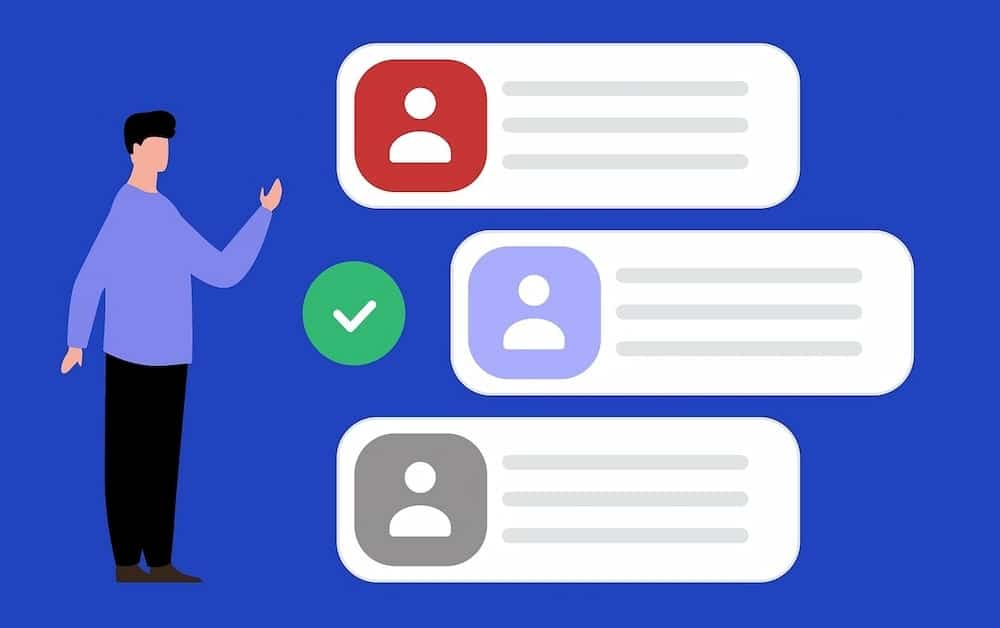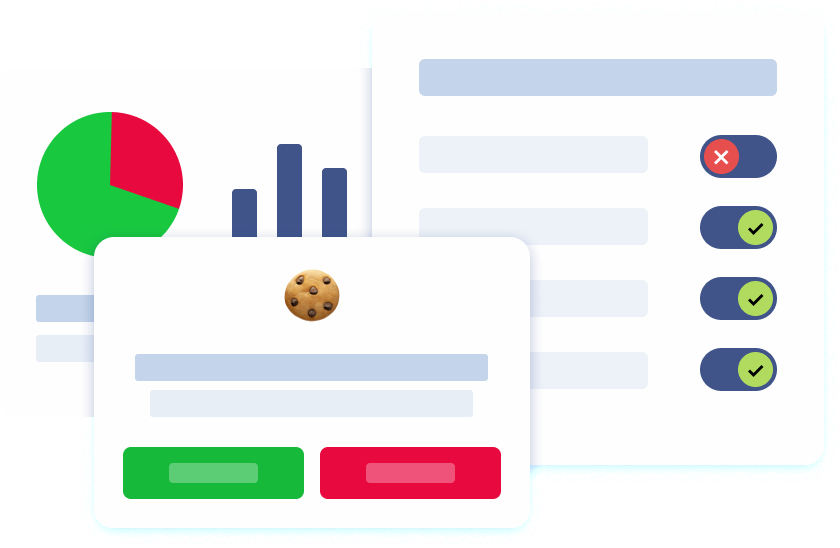Introduction
The IAB Transparency and Consent Framework (TCF) has long been a cornerstone for the digital advertising industry to align with the General Data Protection Regulation (GDPR) and the ePrivacy Directive. Developed by IAB Europe in collaboration with the IAB Tech Lab, the framework provides technical specifications and policies that organizations use to communicate consent preferences, disclose vendors processing data, and ensure personal data protection across the digital advertising ecosystem.
On June 19, 2025, IAB Europe announced the launch of TCF 2.3, which will replace TCF 2.2. Following an initial launch and public comment period, the framework is set to become mandatory on February 1, 2026. This update represents a direct response to evolving expectations from national data protection authorities, particularly the Belgian Data Protection Authority and the Belgian Market Court, which have scrutinized the TCF’s role in processing personal data and ensuring legal compliance.
TCF 2.3 builds upon earlier versions to provide greater transparency, close gaps in vendor disclosure, and offer clearer guidance on acceptable legal bases for data processing. For organizations operating in digital marketing, programmatic advertising, and direct marketing, adopting TCF 2.3 is not optional—it is a critical step toward facilitating compliance and maintaining consumer trust in the advertising industry.
Key Features of TCF 2.3
One of the most significant updates in TCF 2.3 is the reinforced accountability for vendors processing data. Vendors must now more clearly declare when they rely on legitimate interest as a legal basis, and consent management platforms (CMPs) must communicate these signals with less vendor disclosure ambiguity. This strengthens the consent framework TCF as a reliable tool for regulators and organizations operating across the European Union.
In addition, the new version emphasizes technical changes to the TC string, ensuring that only disclosed vendors appear in records of consent signals. By resolving uncertainty around how certain vendors declare and justify their processing activities, the framework reduces the risk of misinterpretation by regulatory authorities. These updates are designed to facilitate compliance with privacy laws while preserving the efficiency of programmatic ads and targeted advertising.
Key highlights of TCF 2.3 include:
- Clearer rules for when a vendor declares a legitimate interest.
- Enhanced user transparency through improved consent banners.
- Reduction in vendor disclosure ambiguity.
- Stronger alignment with guidance from the European Data Protection Board and national authorities.
- A framework that balances consumer privacy with the operational needs of the digital advertising ecosystem.
Benefits of TCF 2.3
For publishers, advertisers, and technology vendors, TCF 2.3 brings measurable advantages. The update provides greater transparency for end users, improving their understanding of how personal data is used for advertising and content personalization. By giving users explicit consent choices and ensuring consent preferences are properly logged, businesses can enhance consumer trust while demonstrating legal compliance.
For vendors, the framework resolves ongoing challenges with vendor disclosure ambiguity, particularly for those who process data under Special Purposes or rely on legitimate interest. By providing technical specifications that clarify vendor declarations, TCF 2.3 ensures a consistent interpretation across the digital advertising industry. This not only reduces regulatory risk but also helps maintain the functionality of programmatic advertising and ad networks that depend on accurate consent signals.
Additional benefits include:
- Competitive advantage for businesses that adopt early.
- Stronger alignment with GDPR compliance and ePrivacy Directive requirements.
- Support for first-party data strategies while still enabling responsible use of third-party cookies where permitted.
- Reduced risk of penalties from regulatory authorities.
Implementing TCF 2.3

Technical Requirements
From a technical implementation perspective, the first step for organizations is updating their Consent Management Platforms (CMPs). CMPs must be capable of handling the TCF 2.3 technical specifications, ensuring that consent signals accurately represent user choices and only include disclosed vendors. Updates to the TC string and technical details must also be integrated across mobile apps, websites, and ad networks.
Key tasks include:
- Updating CMPs to version 2.3.
- Ensuring vendors processing data follow new technical changes.
- Testing integrations with programmatic advertising systems, Google Analytics, and other technology vendors.
Operational Requirements
In addition to technical updates, organizations must also address operational requirements. This includes reviewing and updating vendor lists, revising internal processes for logging consent, and training teams on the implications of TCF 2.3.
Essential steps for operations:
- Maintain an updated list of disclosed vendors and ensure they align with the consent framework.
- Revise contracts with ad buyers, ad networks, and technology vendors to reflect certain provisions of TCF 2.3.
- Provide staff training on user exercises, consent logging, and regulatory requirements.
TCF 2.3 and GDPR Compliance
One of the most important aspects of TCF 2.3 is its close alignment with GDPR compliance and the ePrivacy Directive. Since processing personal data is at the heart of the advertising industry, organizations must rely on an acceptable legal basis such as explicit consent or legitimate interest. TCF 2.3 ensures that these bases are properly communicated through consent signals to prevent violations of privacy laws.
The Belgian Data Protection Authority and the Belgian Market Court have played a central role in clarifying the legal status of IAB Europe as a joint controller within the consent framework. This means that IAB Europe has direct responsibility for ensuring the framework complies with data protection regulations. For businesses, this ruling highlights the importance of adopting TCF 2.3 as a trusted mechanism to ensure compliance and avoid enforcement action from regulatory authorities.
Global Privacy Platform and TCF 2.3
The Global Privacy Platform (GPP) works hand in hand with TCF 2.3 to simplify compliance across multiple jurisdictions. By offering technical specifications that support different privacy laws, the GPP allows organizations operating internationally to standardize how they handle consent management and user privacy.
Through integration with the GPP, businesses can:
- Reduce complexity in technical implementation across multiple regions.
- Ensure consistency in consent preferences and data processing practices.
- Better manage compliance with GDPR and other regulatory requirements beyond the European Union.

Consent Management and TCF 2.3
Consent Management Platforms (CMPs) are the backbone of implementing TCF 2.3. A CMP must ensure that consent banners are displayed in a clear and user-friendly manner, allowing individuals to make informed choices about targeted advertising, direct marketing, and programmatic ads.
To comply with TCF 2.3, CMPs should:
- Accurately capture and store consent signals.
- Ensure certain vendors are properly disclosed and included in the TC string.
- Facilitate giving users control over their personal data while meeting legal compliance obligations.
TCF v2.2 and the Evolution of Consent Management
Before the release of TCF 2.3, the industry operated under TCF v2.2. While TCF v2.2 addressed many challenges, it faced ongoing scrutiny for how it handled vendor disclosure ambiguity and whether it provided greater transparency to users. With the launch of TCF 2.3, these issues are resolved, and the transition from TCF 2.2 is mandatory for all participants in the digital advertising ecosystem by February 1, 2026.
This evolution highlights how consent management continues to adapt in response to consumer privacy concerns, regulatory requirements, and changes in technology vendors’ practices. For publishers, ad networks, and ad buyers, moving from TCF 2.2 to TCF 2.3 is not only about compliance but also about maintaining relevance in a marketplace increasingly focused on personal data protection and user privacy.
Google Analytics and TCF 2.3
Tools like Google Analytics must also adapt to TCF 2.3. Since Google relies on consent signals to determine whether it can track users for digital marketing or advertising and content personalization, organizations must ensure their CMPs pass accurate consent information to Google.
To align Google Analytics with TCF 2.3:
- Integrate your CMP directly with Google’s consent mode.
- Configure explicit consent for third-party cookies and first-party data tracking.
- Regularly audit how Google processes considered personal data to ensure ongoing gdpr compliance.
Consumer Privacy and TCF 2.3
At its core, TCF 2.3 is about strengthening consumer privacy and giving users control over how their personal data is used. By requiring explicit consent through consent banners, the framework ensures that users understand the role of disclosed vendors in delivering programmatic advertising and targeted ads.
This focus on user privacy not only satisfies regulatory requirements but also builds consumer trust. Organizations that prioritize transparency and make it easy for users to exercise their choices will gain a competitive advantage in the evolving digital advertising industry.
Conclusion
IAB TCF 2.3 represents a significant milestone for the digital advertising ecosystem. By updating both the technical specifications and the operational requirements, the framework ensures closer alignment with GDPR compliance, reduces vendor disclosure ambiguity, and prioritizes consumer privacy.
With mandatory adoption beginning on February 1, 2026, organizations must act now to update Consent Management Platforms, review vendor relationships, and ensure that consent signals are properly implemented. Doing so not only helps ensure compliance with regulatory authorities but also builds lasting consumer trust in an industry increasingly defined by greater transparency and personal data protection.
For businesses in digital advertising, programmatic ads, and digital marketing, preparing for TCF 2.3 is both a legal necessity and a strategic opportunity. By staying ahead of technical changes and prioritizing user privacy, companies can navigate the complex landscape of privacy laws while maintaining their role in the global advertising industry.



